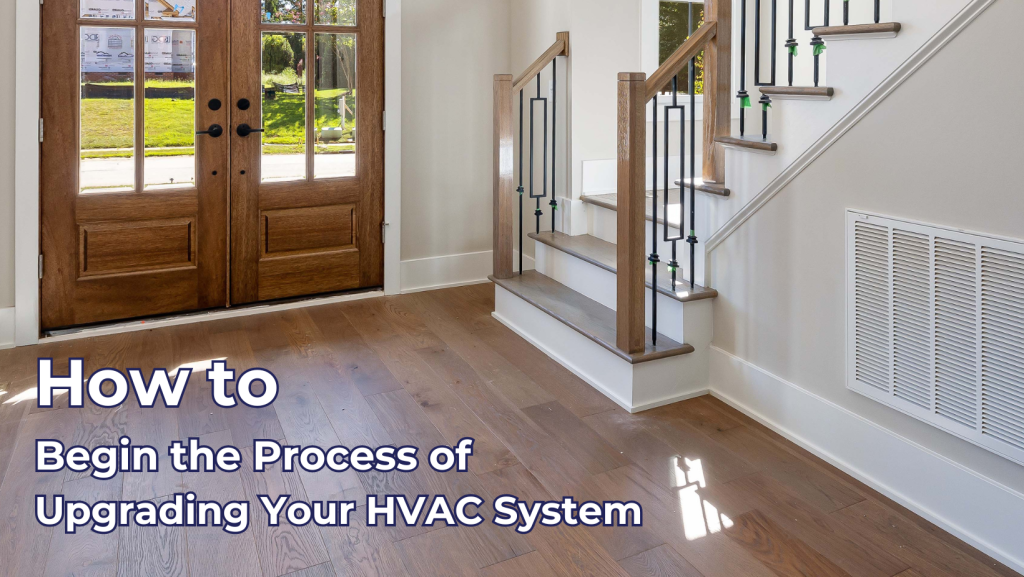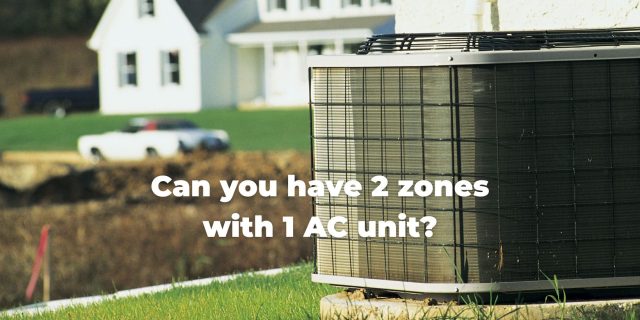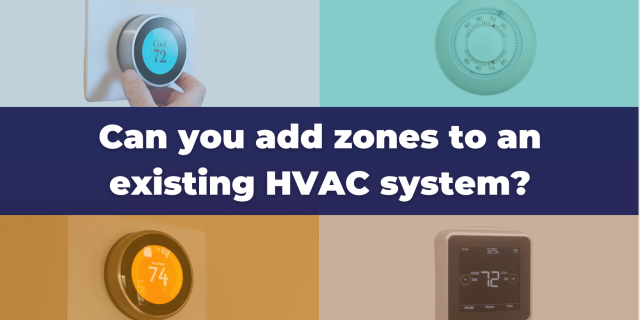
How to Begin the Process of Upgrading Your HVAC System

In today’s world of rapidly evolving technology, ensuring that your home remains comfortable and energy-efficient is a top priority. One significant step you can take toward achieving this goal is an HVAC upgrade. An HVAC system (short for Heating, Ventilation, and Air Conditioning system) plays a pivotal role in maintaining indoor comfort. If you’re reading this, you’re probably wondering how to upgrade your HVAC system. This article will guide you through the process, from understanding the need for an upgrade to selecting the right system and finding a reliable professional for installation.
Why Consider an HVAC Upgrade?
An HVAC system is the heart of your home’s indoor climate control, responsible for maintaining optimal temperatures and ensuring indoor air quality. However, even the most advanced systems can become inefficient and outdated over time. An HVAC upgrade becomes essential for several reasons:
Energy Efficiency
Older systems tend to consume more energy, leading to higher utility bills. An upgrade can significantly enhance energy efficiency, saving you money in the long run.
Improved Performance
As technology advances, newer HVAC systems offer better performance, quicker temperature adjustments, and more precise climate control.
Environmental Impact
Outdated systems often use refrigerants that are harmful to the environment. These refrigerants are no longer being produced, potentially making it harder or more expensive to service your equipment. An upgrade can reduce your carbon footprint by using eco-friendly refrigerants. It will also ensure that you get prompt service when you need a refrigerant refill.
Enhanced Comfort
Newer systems are designed to distribute air more evenly, eliminating hot and cold spots in your home and providing consistent comfort.
Smart Technology Integration
Modern HVAC systems can be integrated with smart home technology, allowing you to remotely control your home’s climate and optimize settings for efficiency.
How to Upgrade Your HVAC System
Embarking on an HVAC upgrade journey involves a series of carefully planned steps. Here’s how to upgrade your HVAC system effectively:
1. Assessment and Planning
The first step in upgrading your HVAC system is to assess your current system’s performance. Identify the areas where it falls short and the improvements you’re seeking. Are you looking for better energy efficiency, improved indoor air quality, or enhanced overall performance? This assessment will help you set clear goals for your upgrade.
2. Research and System Selection
Once you’ve established your upgrade goals, start researching the latest HVAC technologies and systems. Look for systems that align with your goals. You may want to focus on energy efficiency, smart technology integration, or improved air quality. Whatever your goals are, consider the system’s SEER (Seasonal Energy Efficiency Ratio) rating for cooling efficiency and the HSPF (Heating Seasonal Performance Factor) rating for heating efficiency, if you’re using a heat pump.
3. Professional Consultation
While it’s tempting to consider a DIY approach, HVAC systems are complex and require professional expertise for proper installation. Seek consultations from reputable HVAC contractors. Share your upgrade goals and the research you’ve done so far. A professional will guide you in selecting the right system size, type, and features that suit your needs and your home’s layout.
4. Energy Efficiency Considerations
One of the primary reasons for an HVAC upgrade is to enhance energy efficiency. Newer systems come with advanced features like variable-speed motors, smart thermostats, and zoned heating and cooling. All of these features contribute to reduced energy consumption. These features enable the system to adjust its performance based on your home’s requirements, optimizing energy usage without sacrificing comfort.
5. Financial Planning
An HVAC upgrade is an investment that pays off over time through energy savings, increased home value, and improved comfort. However, it’s essential to budget for the upgrade. Research the cost of the system, installation charges, and any additional expenses, such as ductwork modifications. Explore financing options if needed, as many HVAC contractors offer flexible payment plans.
6. Installation Process
Once you’ve selected the right HVAC system and completed all necessary preparations, it’s time for installation. A professional HVAC contractor will ensure proper installation, including system positioning, ductwork adjustments, and electrical connections. Proper installation is crucial for the system’s efficiency and longevity.
7. Post-Installation Maintenance
After your HVAC upgrade is complete, regular maintenance is essential to keep the system running optimally. Schedule periodic maintenance visits with your HVAC contractor to inspect the system, clean filters, and address any potential issues. Proper maintenance prolongs the system’s lifespan and ensures consistent performance.
HVAC Upgrade Results
An HVAC upgrade significantly enhances your home’s comfort, energy efficiency, and overall indoor air quality. Knowing how to upgrade your HVAC system involves a systematic approach, from assessing your needs to selecting the right system and ensuring proper installation and maintenance. By following these steps and seeking professional guidance, you’ll be well on your way to enjoying the benefits of a modern, efficient HVAC system that meets your family’s needs for years to come.
Arzel’s Comfort Solution
Even with a brand-new HVAC system, you may still notice hot and cold spots in your home. You might also want to set back the temperature in an area you’re not using, adding to the energy efficiency of your new system. This is where HVAC zoning comes in.
Zoning allows you to have more precise control by dividing your home into sections, or zones. A thermometer in each zone controls the temperature in only that area. It’s a perfect solution for hot second floors or sunny breakfast nooks that need less heat and more cooling. Controlling the temperature by zone also gives you the ability to save energy by setting the temperature back in zones you’re not using.
To learn more about HVAC zoning, see our Answerbook.
Topics
- Energy Efficiency (17)
- Homeowner Tips (19)
- HVAC Zoning (25)
- Indoor Air Quality (2)
- Indoor Comfort (32)
- Uneven Temperatures (5)
Recent Posts
View AllEverybody needs to heat and cool their home, and no one likes to pay for it. Even so, most of us are wasting energy to make our homes comfortable. This guide to HVAC zoning will show you how to avoid this pitfall. At the same time, you’ll get better comfort in your home. Imagine lower […]
Creating Multiple Comfort Zones with One AC Unit Can you have two zones with one AC unit? The answer is a resounding yes. With HVAC zoning, you can transform your home into multiple comfort zones, each tailored to your preferences. Instead of relying on a single thermostat to control the entire house, HVAC zoning uses […]
If you’re like most homeowners, you probably look for ways to save money on energy costs. Does HVAC zoning save money? We’ll explore that question here, so you’ll know what to expect if you decide to install HVAC zoning in your home. What Is HVAC Zoning? Let’s start with the basics. When you add zoning […]
Why many homes are uncomfortable Before we ask, “Can you add zones to your existing HVAC system?” it’s helpful to ask why you’d want to do that. Well, without adding zones, you’re left with just one temperature zone for the entire home. There are several issues with this. One thermostat doesn’t give you much control […]



